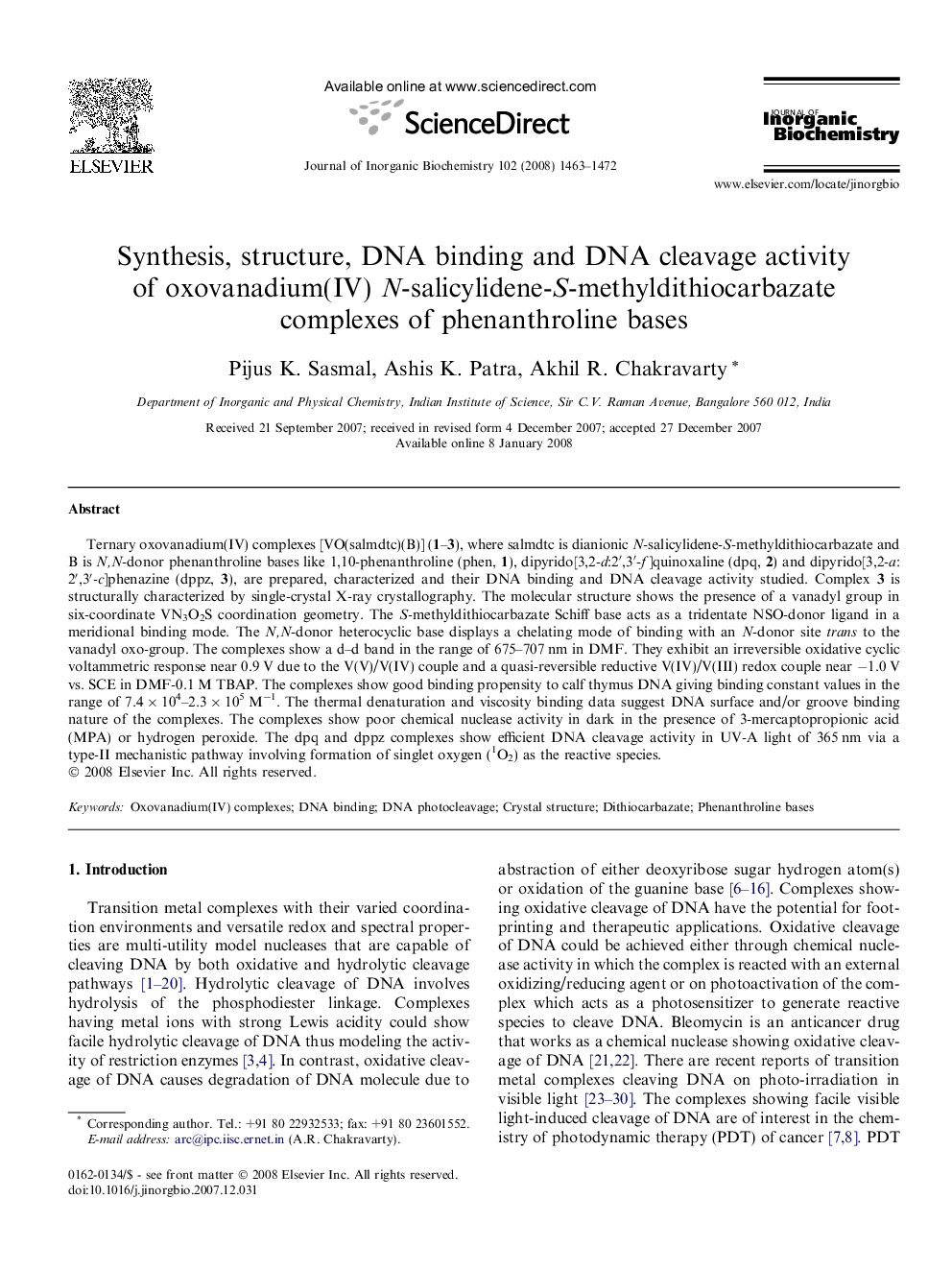| Article ID | Journal | Published Year | Pages | File Type |
|---|---|---|---|---|
| 1316504 | Journal of Inorganic Biochemistry | 2008 | 10 Pages |
Ternary oxovanadium(IV) complexes [VO(salmdtc)(B)] (1–3), where salmdtc is dianionic N-salicylidene-S-methyldithiocarbazate and B is N,N-donor phenanthroline bases like 1,10-phenanthroline (phen, 1), dipyrido[3,2-d:2′,3′-f]quinoxaline (dpq, 2) and dipyrido[3,2-a:2′,3′-c]phenazine (dppz, 3), are prepared, characterized and their DNA binding and DNA cleavage activity studied. Complex 3 is structurally characterized by single-crystal X-ray crystallography. The molecular structure shows the presence of a vanadyl group in six-coordinate VN3O2S coordination geometry. The S-methyldithiocarbazate Schiff base acts as a tridentate NSO-donor ligand in a meridional binding mode. The N,N-donor heterocyclic base displays a chelating mode of binding with an N-donor site trans to the vanadyl oxo-group. The complexes show a d–d band in the range of 675–707 nm in DMF. They exhibit an irreversible oxidative cyclic voltammetric response near 0.9 V due to the V(V)/V(IV) couple and a quasi-reversible reductive V(IV)/V(III) redox couple near −1.0 V vs. SCE in DMF-0.1 M TBAP. The complexes show good binding propensity to calf thymus DNA giving binding constant values in the range of 7.4 × 104–2.3 × 105 M−1. The thermal denaturation and viscosity binding data suggest DNA surface and/or groove binding nature of the complexes. The complexes show poor chemical nuclease activity in dark in the presence of 3-mercaptopropionic acid (MPA) or hydrogen peroxide. The dpq and dppz complexes show efficient DNA cleavage activity in UV-A light of 365 nm via a type-II mechanistic pathway involving formation of singlet oxygen (1O2) as the reactive species.
